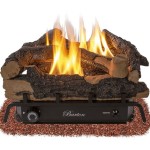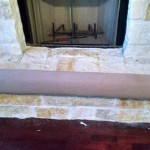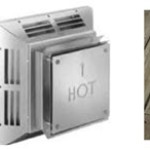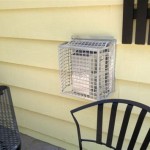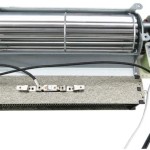Fireplace Plans Indoor: A Comprehensive Guide to Design and Installation
Indoor fireplaces have evolved from practical heating sources to significant focal points in home design. Planning for an indoor fireplace requires careful consideration of various factors, including design aesthetics, functionality, safety regulations, and budget constraints. This article provides a comprehensive overview of indoor fireplace plans, covering essential design considerations, installation procedures, and safety measures.
Design Considerations for Indoor Fireplace Plans
The design of an indoor fireplace significantly impacts the overall ambiance of a room. Several design elements must be considered to create a functional and aesthetically pleasing fireplace.
1. Fireplace Style: Selecting the appropriate style is paramount. Options range from traditional wood-burning fireplaces to modern gas or electric models. Traditional fireplaces often feature brick or stone surrounds, creating a rustic and cozy atmosphere. Modern fireplaces, on the other hand, tend to have sleek lines and minimalist designs, often incorporating materials like glass, steel, or concrete. The architectural style of the house should inform the fireplace style choice to ensure a cohesive design.
2. Fireplace Location: Determining the optimal location for the fireplace is crucial for both aesthetic and functional purposes. Ideally, the fireplace should be positioned where it can be enjoyed from multiple areas of the room. Common locations include the center of a wall, in a corner, or as a room divider. Consider the existing layout of the room, furniture placement, and traffic flow when selecting the location.
3. Fireplace Dimensions: The size of the fireplace should be proportional to the size of the room. A fireplace that is too large can overwhelm a small space, while a fireplace that is too small may appear insignificant in a large room. Consider the dimensions of the firebox, surround, and mantel when planning the overall size of the fireplace. Consult with a professional to determine the appropriate size for the specific room.
4. Fireplace Materials: The materials used for the fireplace surround and mantel can significantly impact its aesthetic appeal. Common materials include brick, stone, wood, tile, and concrete. Each material offers a unique look and feel. Brick and stone provide a traditional and rustic appearance, while wood adds warmth and character. Tile offers a wide range of colors and patterns, and concrete provides a modern and industrial aesthetic. The material choice should complement the overall design of the room and the style of the fireplace.
5. Fireplace Mantel and Surround: The mantel serves as a decorative shelf above the firebox, providing a space for displaying artwork, photographs, or other decorative items. The surround encompasses the firebox and provides a visual frame for the fireplace. The design of the mantel and surround should complement the style of the fireplace and the overall design of the room. Consider incorporating architectural details, such as moldings, carvings, or tile patterns, to enhance the visual appeal of the fireplace.
6. Fuel Type: The choice of fuel type significantly impacts the design and functionality of the fireplace. Wood-burning fireplaces require a chimney for venting smoke and combustion gases. Gas fireplaces require a gas line and venting system. Electric fireplaces, on the other hand, do not require venting and can be installed virtually anywhere with an electrical outlet. Each fuel type offers unique advantages and disadvantages in terms of cost, convenience, and environmental impact.
7. Fireplace Ventilation: Proper ventilation is essential for safe and efficient fireplace operation. Wood-burning fireplaces require a chimney to vent smoke and combustion gases. Gas fireplaces often utilize direct-vent or vent-free systems. Direct-vent fireplaces vent directly to the outside, while vent-free fireplaces do not require venting but may not be suitable for all homes due to indoor air quality concerns. Ensure that the selected venting system meets local building codes and safety regulations.
Installation Procedures for Indoor Fireplaces
Installing an indoor fireplace involves multiple steps and requires careful attention to safety and building codes. It is often recommended to hire a qualified professional for fireplace installation to ensure proper and safe operation.
1. Planning and Permitting: Before commencing any fireplace installation, it is essential to obtain the necessary permits from local building authorities. The planning phase involves determining the fireplace location, size, and fuel type. It also includes selecting the appropriate venting system and ensuring compliance with all applicable building codes and safety regulations.
2. Chimney Installation (for Wood-Burning Fireplaces): Installing a chimney is a critical step in the installation of a wood-burning fireplace. The chimney must be properly sized and constructed to ensure adequate draft and prevent the buildup of creosote, a flammable substance that can cause chimney fires. The chimney should extend above the roofline to prevent downdrafts and ensure proper venting of smoke and combustion gases. It's crucial to adhere to local building codes regarding chimney height and clearance from combustible materials.
3. Gas Line Installation (for Gas Fireplaces): Installing a gas line requires specialized knowledge and expertise. It is essential to hire a qualified gas fitter to ensure that the gas line is properly installed and connected to the fireplace. The gas line should be sized appropriately for the fireplace and should be equipped with a shut-off valve for safety. Leak testing is crucial to ensure no gas leaks after installation.
4. Electrical Wiring (for Electric Fireplaces): Electric fireplaces require an electrical connection to power the heating element and any additional features, such as lights or fans. A qualified electrician should handle the electrical wiring to ensure that it meets local electrical codes and safety regulations. The electrical circuit should be properly sized for the fireplace to prevent overloading and potential fire hazards.
5. Firebox Installation: The firebox is the heart of the fireplace and houses the fire. The firebox should be installed according to the manufacturer's instructions, ensuring proper clearances from combustible materials. It is crucial to use non-combustible materials for the firebox construction and surrounding areas to prevent fire hazards. The firebox should be securely anchored to the floor or wall to prevent movement or tipping.
6. Surround and Mantel Installation: The surround and mantel provide the decorative finishing touches to the fireplace. These components should be installed according to the manufacturer's instructions, ensuring proper alignment and secure attachment. It is crucial to use appropriate fasteners and adhesives for the selected materials. The surround and mantel should be installed to provide adequate clearance from the firebox opening to prevent overheating and potential fire hazards.
7. Venting System Installation (for Gas and Wood-Burning Fireplaces): The venting system is essential for removing smoke and combustion gases from the fireplace. The venting system should be installed according to the manufacturer's instructions, ensuring proper sealing and connection to the firebox and chimney. It is crucial to use the appropriate type of venting system for the specific type of fireplace and fuel. Venting systems should be regularly inspected and maintained to ensure proper operation and prevent blockages.
Safety Measures for Indoor Fireplaces
Safety is paramount when operating an indoor fireplace. The following safety measures should be observed to prevent accidents and ensure safe operation.
1. Regular Inspections and Maintenance: Regular inspections and maintenance are essential for ensuring the safe operation of an indoor fireplace. Chimneys should be inspected annually by a qualified chimney sweep to remove creosote buildup and identify any potential problems. Gas fireplaces should be inspected regularly by a qualified gas fitter to ensure that the gas line and venting system are in proper working order. Electrical fireplaces should be inspected regularly by a qualified electrician to ensure that the electrical connections are secure and that the heating element is functioning properly.
2. Smoke Detectors and Carbon Monoxide Detectors: Smoke detectors and carbon monoxide detectors should be installed in the vicinity of the fireplace to provide early warning of potential fire or carbon monoxide hazards. Smoke detectors should be tested regularly to ensure that they are functioning properly. Carbon monoxide detectors should be replaced every five to seven years, or as recommended by the manufacturer.
3. Fire Extinguisher: A fire extinguisher should be readily accessible near the fireplace in case of a fire. The fire extinguisher should be rated for the type of fire that may occur with the specific type of fireplace. Ensure that all household members are familiar with the operation of the fire extinguisher.
4. Proper Fuel Storage and Handling: Proper fuel storage and handling are essential for preventing fire hazards. Wood should be stored in a dry, well-ventilated area away from the house to prevent rot and insect infestation. Gas cylinders should be stored in a secure, upright position away from heat sources and ignition sources. Electrical cords should be properly maintained and should not be overloaded.
5. Child and Pet Safety: Fireplaces can pose a safety hazard to children and pets. A fireplace screen or guard should be used to prevent children and pets from getting too close to the fire. Never leave children unattended near a fireplace, and teach them about the dangers of fire. Keep flammable materials, such as curtains and furniture, away from the fireplace.
6. Proper Ventilation: Proper ventilation is essential for preventing carbon monoxide poisoning. Never operate a wood-burning fireplace with the doors or windows closed. Ensure that the chimney is properly vented and that there are no blockages. If using a vent-free gas fireplace, ensure that the room is adequately ventilated to prevent the buildup of carbon monoxide.
7. Safe Operation Practices: Safe operation practices are essential for preventing accidents. Never use flammable liquids, such as gasoline or kerosene, to start a fire. Never overload the firebox with wood or other fuel. Never leave a fire unattended, and extinguish the fire completely before leaving the house or going to bed. Use appropriate tools, such as tongs and a poker, to manage the fire safely.
By carefully considering these design elements, installation procedures, and safety measures, homeowners can create an indoor fireplace that provides warmth, ambiance, and enjoyment for years to come. Consulting with qualified professionals, such as architects, contractors, and fireplace specialists, can ensure a successful and safe fireplace installation.

How To Build An Indoor Fireplace The Constructor

How To Build An Indoor Fireplace The Constructor

Rumford Fireplace Plans Instructions Contemporary Outdoor Fireplaces

Rumford Fireplace Plans Instructions

Indoor Living And Fireplace Design Ideas Outdoor Advice Greatrooms

Plan 46017hc Indoor And Outdoor Fireplaces Country House Plans Lake Farmhouse

Rumford Fireplace Plans Instructions

Bon Tool Knowledge Center Construction Plan Chimney Design Fireplace Dimensions

Indoor And Outdoor Fireplaces 46017hc Architectural Designs House Plans

Floor Plan Friday Indoor Outdoor Fireplace

